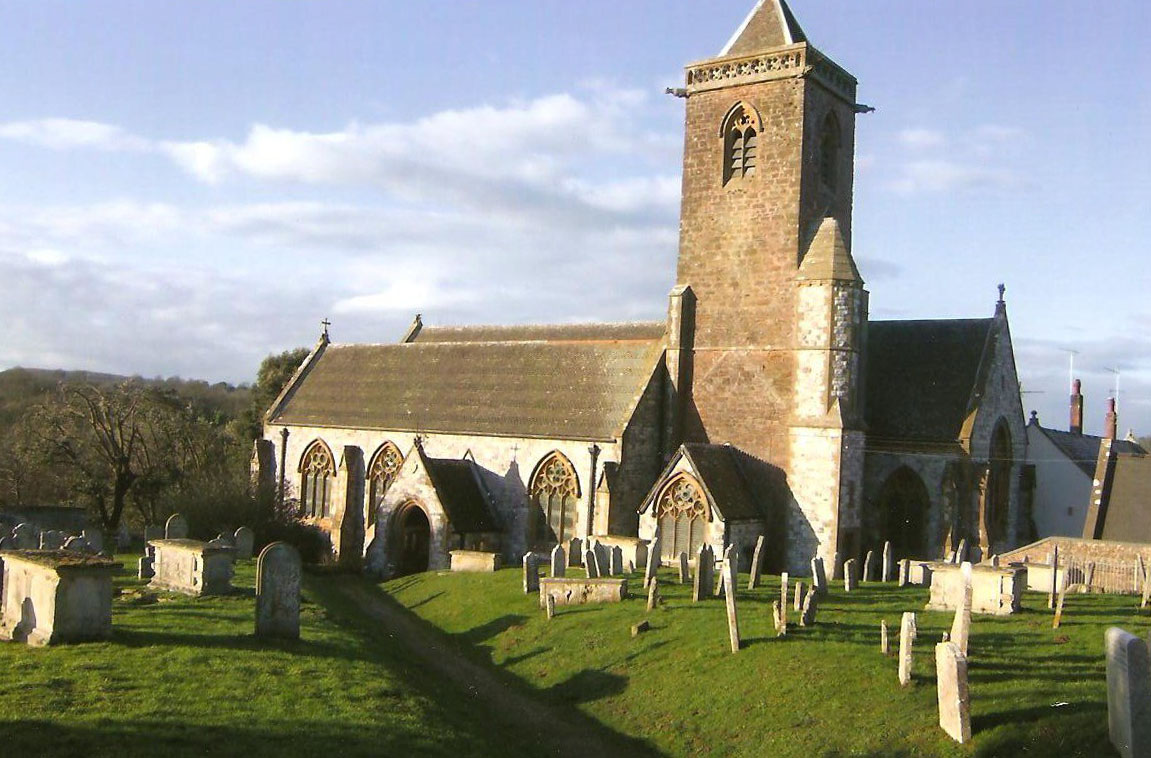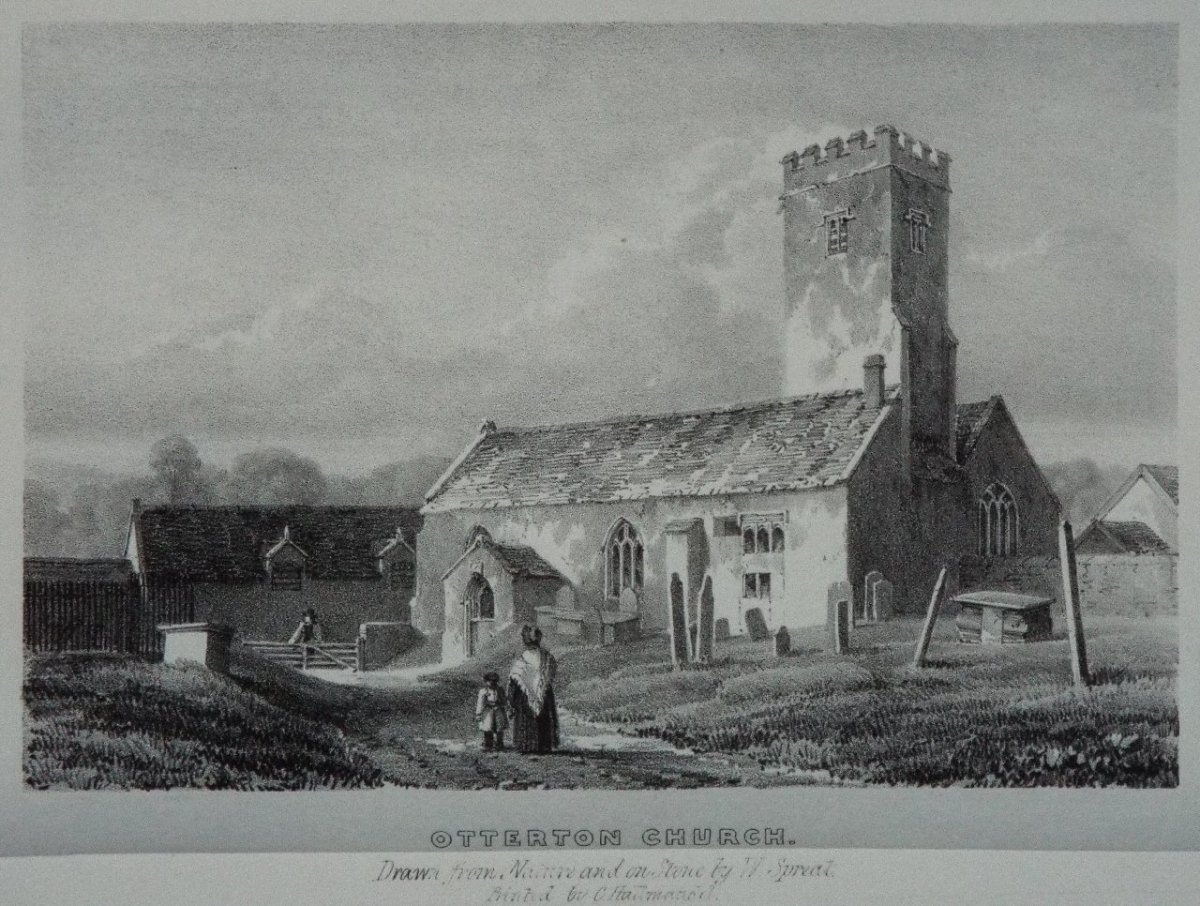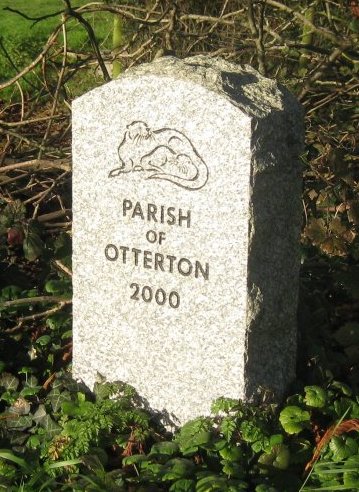|
Otterton
History - History of St. Michaels Church

The Saxons settled in the Otter Valley
and established a community around the haven at
Otterton in the 8th. century. A Church was built
on the high ground above the harbour and in due
time a prosperous port developed.
300 years or so later the Normans
conquered England and granted the Manor of
Otterton, which included Sidmouth, to the Abbey
of Mont St. Michel in Normandy, in return for
his use of their vessels to transport his army
from France. In 1125 Henry II granted the
southern part of East Budleigh Manor, also to
the Abbey lands at Otterton. The northern part
was granted to Polsloe Priory, Exeter. 27 years
later a Priory was established at Otterton,
adjacent to the existing Church. The Abbot of
Mont St, Michel came to Otterton and inducted
Nicholas, a priest, as the first Prior with 4
monks. The Priory was built where the School,
Churchyard and St. Michaels Close are today.
It is believed that the Saxon Church was rebuilt
as a Priory Church with a separate nave &
altar built for the village to the west end,
leaving the newly built tower, believed to be
late 11th.century, in the centre.
During the 14th, century and the “100”
years War, the Prior and monks had been
expelled from French Priories in England and in
1414 Henry V closed all of them. The Otterton
Priory lands were granted to the new Syon Abbey,
Isleworth . The Priory Church and buildings fell
into disuse, leaving the west end nave as the
village Church.
For the next 100 years, building material from
the Priory ruins were used in buildings
elsewhere including a transept chapel against
the Tower and later a South Aisle to the
remaining Church.(see Print by Spreat 1842).
After the Dissolution of the Monasteries (1539)
the new Lord of the Manor, Richard Duke, built
himself a Manor House from the remaining ruins,
alongside the village Church.
By 1800 a visitor had reported that the Church
“had fallen into a sad state of disrepair and
neglect” and the 1820’s saw a number of repairs
being made.
Between 1801 and 1841 the population of Otterton
had increased by over 300 persons. A faculty was
granted to demolish part of the north side of
the Church and erect a transept with 21 pews to
seat the village school children at a cost of
£300 paid by Lord Rolle, the Lord of the Manor.
About 50 skilled workmen were lodged in the
village to carry out the work.
The Church served the village adequately for the
next 30 years, while the population decreased by
150 persons. Then unexpectedly, in 1869, Lady
Rolle decided to demolish it and had built a
much larger Church at her own expense (£12,000),
also pulling down part of the Manor House and a
barn of the Barton in the process, but retaining
the Tower.
In 1879 a new organ was installed. The old
Church had only had a barrel organ.
The new Church had only one stained glass
window- at the west end – which provided
excellent lighting through the clear glass
windows. In 1907 a further stained glass window
was installed over the altar commemorating Hon.
Mark Rolles life. Electric lighting was fitted
in 1939. In 1921 a side altar was erected in the
North Transept by Lady Clinton.
Clocks & Bells
There had been a clock in the Tower before 1738,
when 10/-was paid for cleaning it. The present
clock was installed in 1891. The previous clock
faced east and was transferred to its position
facing north in 1870 as the miller could not see
it from his Mill.
Of the 6 bells that reside in the Tower, three
were hung in 1777. But there had been
bells in the Tower dating back to the 16th.
century. The others were hung in 1824, 1846 and
1890.
Gerald Millington 2012
Sources
1840 Faculty & plan (DRO
Diocesan/Faculty causes/Otterton 2)
History of the Church at Otterton by E. M.
Harrison 1983 and leaflet
All About Otterton by G. Millington & Bob
Jones 2000 Keverel Press

Drawn by W J Spreat c.1842
Lithograph
Printed by C. Hullmandel.
|

